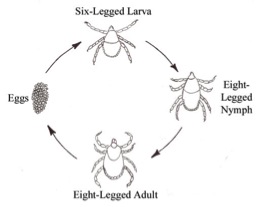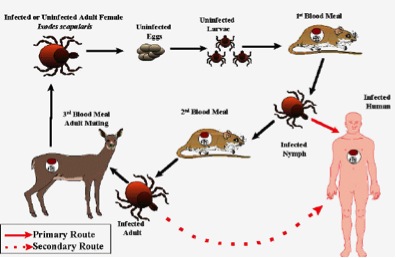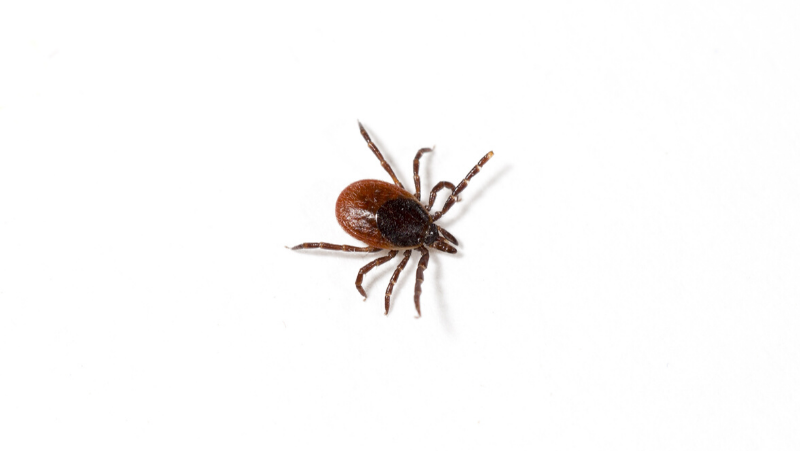tick life cycle nz
Most ticks go through four life stages. A newly hatched six-legged larva feeds on a host drops off to the ground and moults to a nymph.

Life Cycle Of Theileria Parva In Cattle And The Ixodid Tick Vector Download Scientific Diagram
Eggs hatch to become larvae which moult to become nymphs then adults.
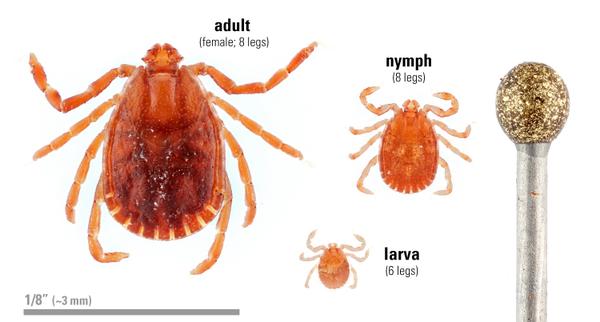
. Use a Chewable Proven to Kill the Ticks That Transmit Lyme Disease More. However they can lay eggs just about anywhere else and they do. Life Cycle of Ticks.
Ticks go through four life stages. Egg larva nymph adult. These are spherical slightly translucent dark brown in color and are laid in clusters of up to 3000 individuals.
Stages in the Life Cycle of Ticks. Theileria is a protozoan which acts as a parasite spread by the saliva of ticks as they suck the hosts blood. Ticks have backwardly pointing teeth Handle your clothing carefully When you come in place your clothing somewhere warm to dry out in a hot room or on a hot windowsill.
The NZ cattle tick is a 3 hosts tick which means that each stage of its lifecycle larvae nymph and adult is carried out on a different host and even sometimes different animal species. In spring the nymphs now 2-3mm attach to another host and engorge again over three to five days expanding to about 5mm. Eggs are not dangerous and.
1 The Egg Stage 1 After the adult female tick has acquired a proper blood meal she mates with the adult male tick leaves the host and searches for a suitable spot to lay her eggs. Adult ticks generally start laying eggs in November when conditions are warm and wet and adults are commonly seen feeding on livestock between December and February. Lets review the life-cycle of a tick.
They drop off moult to become adults. This nymph can over-winter in quite cold temperatures. Ticks are not able to lay eggs directly on a host they must first detach.
After a two-year life cycle a female tick can lay thousands of eggs. Green Tick Global - one certification ecolabel worldwide. Life cycle There are four stages in the tick life cycle which usually takes a year to complete.
The ticks will dry out and die within 24 hours. Ticks generally thrive in warmer moist environments but struggle to survive if. Ticks can live without a blood meal for over a year so leaving pasture un-grazed and hoping the ticks will die from lack of food isnt a very practical option.
These eggs are the first of the four distinct life stages that make up the tick life cycle. Invented by New Zealanders in 1998. Ixodes scapularis the black-legged deer tick which is the primary vector for Lyme disease has a four-stage life cycle and a lifespan of about two years.
The life cycle of ticks Eggs. In veterinary terms the disease is called oriental theilerisosis. Certified products sold in Australasia Asia and the USA.
Inside or out ticks love a warm environment to lay their eggs. After hatching from the eggs ticks must eat blood at each stage in order to move on to the next one. Its important to be familiar with this life cycle to get rid of ticks from your lawn and landscape and prevent tick bites.
Egg six-legged larva eight-legged nymph and adult. In early spring ticks begin to lay their eggs. It is called a three-host tick with each of its growing stages - larvae nymph and adult - feeding off separate hosts not necessarily of the same species.
They move on and off hosts three times during their life cycle and each time they engorge on blood. This protozoan Theileria orientalis ikeda is the one currently causing problems and spreading south in New Zealand cattle. They need the dry to.
In general the life cycle of a hard tick is as follows. After hatching from the eggs ticks must eat blood at every stage to survive. Worlds first independent life-cycle based sustainability certification system that applies globally.
The early mid-summer than attach to a host again and engorge to about 10mm over three to five days. It may be best to fence off those areas. The eggs hatch and six-legged larvae emerge from the eggs.
Ticks that require this many hosts can take up to 3 years to complete their full life cycle and most will die because they dont find a host for their next feeding. Ticks begin their lives as eggs. Now let us look at their life cycle to get a better understanding.
Ticks have four stages to their lifecycle namely egg larva nymph and adult. LIFE CYCLE OF THE DEER TICK. Gravid pregnant female ticks lay batches of up.
Impeccable track record for 23 years. Ticks belonging to the Ixodidae family undergo either a one-host two-host or three-host lifestyle. How long does the life cycle of the New Zealand cattle tick take and how long do they spend feeding.
Hard ticks have only one nymphal stage unlike soft ticks. Once brimming with blood they. Proven sales success link.
Ticks locate potential hosts by sensing odor body heat moisture andor vibrations in the environment. Ticks can survive the winter hiding under snow leaf litter and brush. Ad Try a Chewable That Kills The Ticks That Transmit Lyme Disease Other Parasites.
Black-legged ticks deer ticks typically become infected with the Lyme-causing bacteria Borrelia burgdorferi during their larval stage when they. The life cycle of a tick is completed after four stages namely egg larva nymph and adult it requires more than a year to complete a full life cycle. The First Stage egg The adult female tick first fulfills a proper blood meal then the process of mating occurs between an adult male and adult female tick.
Adult ticks lay up to 2000 eggs on the ground in summer. There are many different species of tick in the world but Hlongicornis is the only one found in New Zealand. In New Zealand they are most common in the North Island because the climate is more to its liking.
On average tick eggs hatch after about 2 weeks though it can take as long as 6. If you have poorly-drained pasture your animals are more at risk from picking up ticks as this is a good habitat for them. 1 year Each stage only feeds a few days a year meaning most of the life cycle is spent in the environment.
This is the safest way to handle your outdoor clothing as ticks can survive a full cycle in the washing machine. A nymph seeks out and feeds on a second host drops off to the ground and moults to an adult. Tick season has various peaks corresponding to the life-cycle but generally numbers are higher during the warmer months and they tend to over-winter in New Zealand when they are less active.
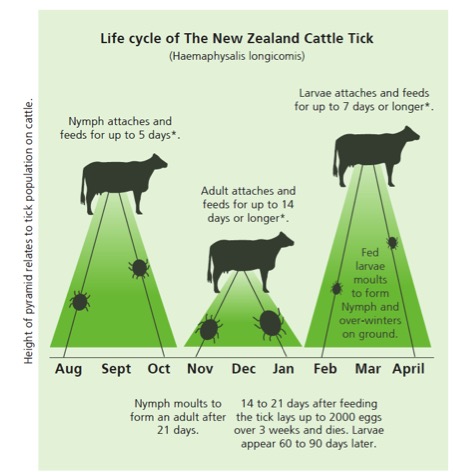
Theileria Emerging Disease In Cattle Vet Centre

Flea Control For Pets All Year Round With Franklin Vets

Asian Longhorned Tick Nc State Extension Publications

Ticks Found On Canterbury Dogs Stuff Co Nz

Life Cycle Of A Multi Host Argasid Tick Example Is Ornithodoros Download Scientific Diagram
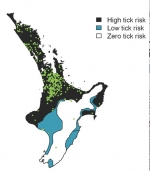
Hardy Ticks Well Equipped To Survive Thrive

Pdf Experimental Aspects Of Life Cycles Of Two Hard Tick Species Rhipicephalus Boophilus And Hyalomma Isaaci Acari Ixodidae On New Zealand White Rabbits

Life Cycle Of Spinose Ear Tick Otobius Megnini Acari Argasidae Infesting The Race Horses In Nuwara Eliya Sri Lanka Sciencedirect
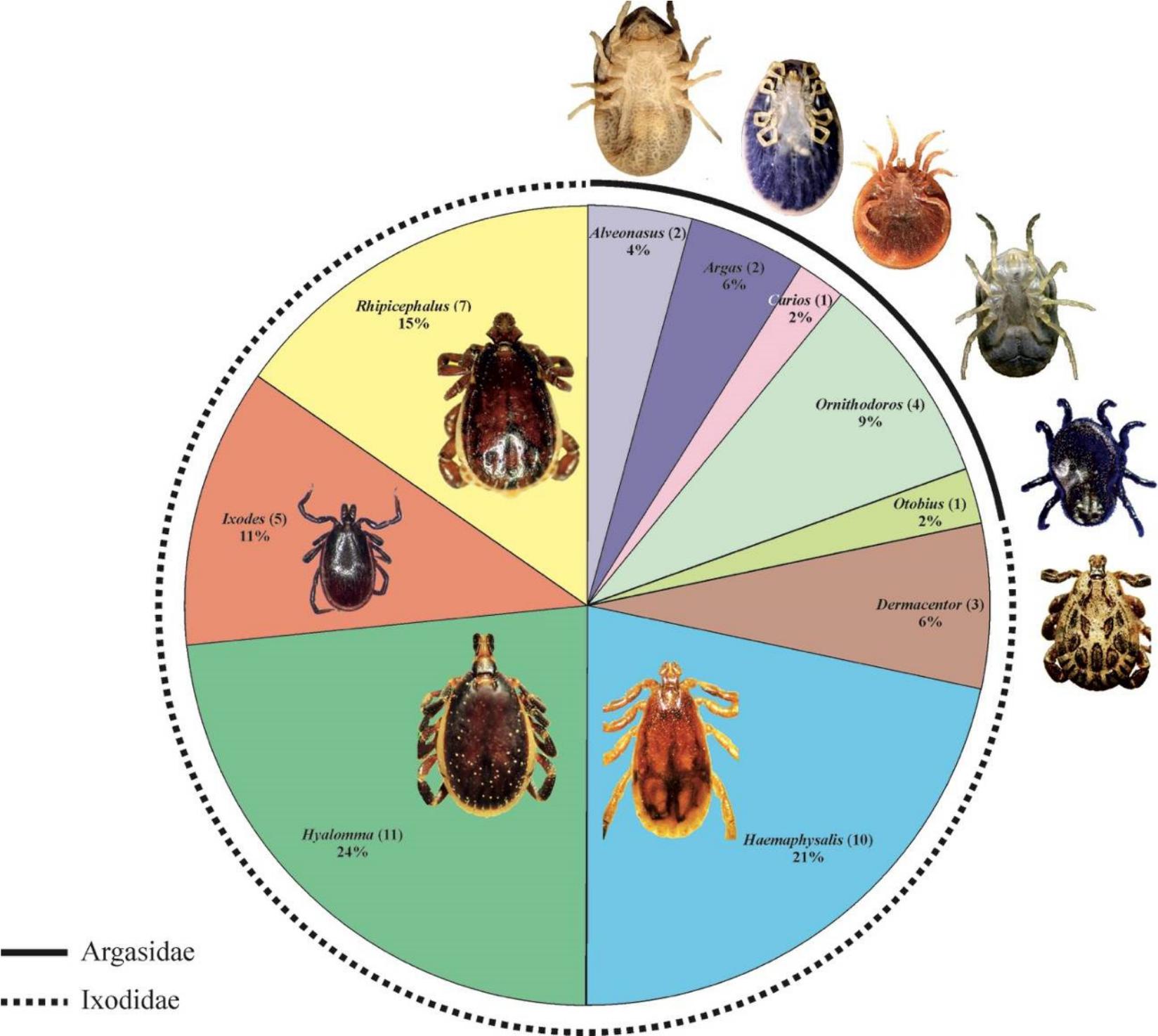
The Updated List Of Ticks Acari Ixodidae Argasidae Occurring In Iran With A Key To The Identification Of Species

Three Host Life Cycle Of Ixodes Derived From Ref 13 Download Scientific Diagram




